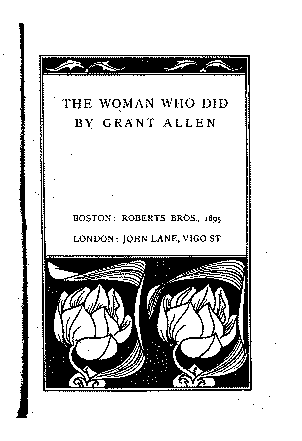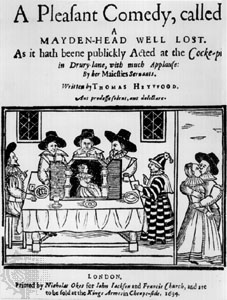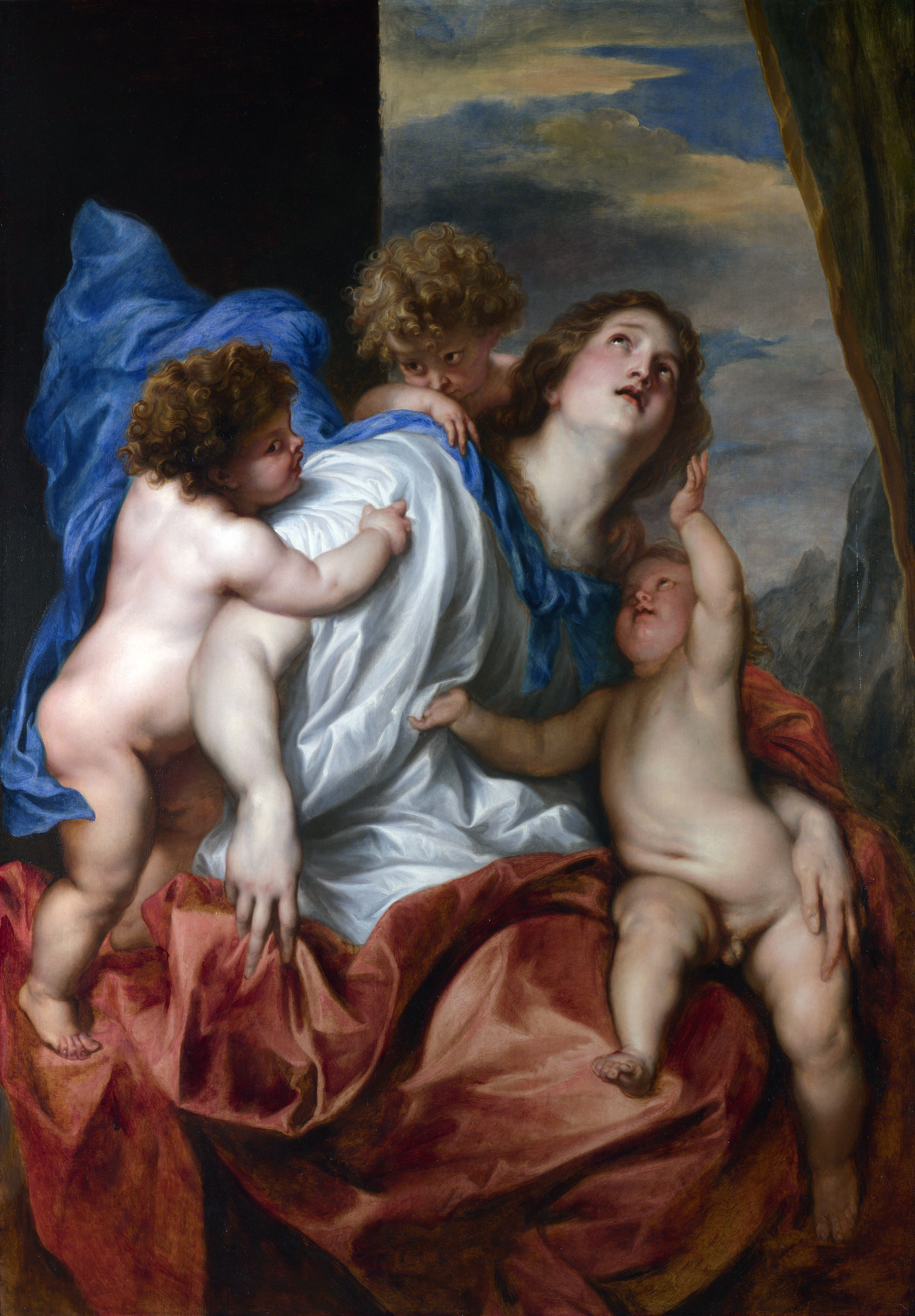|
Mrs Craddock
''Mrs Craddock'' is a novel by William Somerset Maugham first published in 1902. Plot introduction Set in the final years of the 19th century, ''Mrs Craddock'' is about a young and attractive woman of independent means who marries beneath her. As he had written about a subject that was considered daring at the time, Maugham had some difficulty finding a publisher. Completed in 1900, the novel was eventually published in 1902 by William Heinemann, but only on the condition that the author took out passages which, according to Heinemann, might have offended the readers. A successful and popular book, ''Mrs Craddock'' was reissued in 1903 and again in 1908. In 1938 the first non-Bowdlerized version, stylistically improved by Maugham, came out. Plot summary On her 21st birthday, when she comes into her deceased father's money, Bertha Ley announces, to the dismay of her former guardian, that she is going to marry 27-year-old Edward Craddock, her steward. Herself a member of the ... [...More Info...] [...Related Items...] OR: [Wikipedia] [Google] [Baidu] |
William Somerset Maugham
William Somerset Maugham ( ; 25 January 1874 – 16 December 1965) was an English writer, known for his plays, novels and short stories. Born in Paris, where he spent his first ten years, Maugham was schooled in England and went to a German university. He became a medical student in London and qualified as a physician in 1897. He never practised medicine, and became a full-time writer. His first novel, ''Liza of Lambeth'' (1897), a study of life in the slums, attracted attention, but it was as a playwright that he first achieved national celebrity. By 1908 he had four plays running at once in the West End theatre, West End of London. He wrote his 32nd and last play in 1933, after which he abandoned the theatre and concentrated on novels and short stories. Maugham's novels after ''Liza of Lambeth'' include ''Of Human Bondage'' (1915), ''The Moon and Sixpence'' (1919), ''The Painted Veil (novel), The Painted Veil'' (1925), ''Cakes and Ale'' (1930) and ''The Razor's Edge'' (1944). ... [...More Info...] [...Related Items...] OR: [Wikipedia] [Google] [Baidu] |
Member Of Parliament (United Kingdom)
In the United Kingdom, a member of Parliament (MP) is an individual elected to serve in the House of Commons of the Parliament of the United Kingdom. Electoral system All 650 members of the UK House of Commons are elected using the first-past-the-post voting system in single member constituencies across the whole of the United Kingdom, where each constituency has its own single representative. Elections All MP positions become simultaneously vacant for elections held on a five-year cycle, or when a snap election is called. The Fixed-term Parliaments Act 2011 set out that ordinary general elections are held on the first Thursday in May, every five years. The Act was repealed in 2022. With approval from Parliament, both the 2017 and 2019 general elections were held earlier than the schedule set by the Act. If a vacancy arises at another time, due to death or resignation, then a constituency vacancy may be filled by a by-election. Under the Representation of the People Act 198 ... [...More Info...] [...Related Items...] OR: [Wikipedia] [Google] [Baidu] |
Ellen Glasgow
Ellen Anderson Gholson Glasgow (April 22, 1873 – November 21, 1945) was an American novelist who won the Pulitzer Prize for the Novel in 1942 for her novel ''In This Our Life''. She published 20 novels, as well as short stories, to critical acclaim. A lifelong Virginian, Glasgow portrayed the changing world of the contemporary South in a realistic manner, differing from the idealistic escapism that characterized Southern literature after Reconstruction.Inge, Tonette Bond (1989)"Ellen Anderson Gholson Glasgow, 1873-1945" Charles Reagan Wilson & William R. Ferris, eds., ''Encyclopedia of Southern Culture''. University of North Carolina Press. Early and family life Born in Richmond, Virginia, on April 22, 1873, to Anne Jane Gholson (1831-1893) and her husband, Francis Thomas Glasgow, the young Glasgow developed differently from other women of her aristocratic class. Due to poor health (later diagnosed as chronic heart disease), Glasgow was educated at home in Richmond, receiving ... [...More Info...] [...Related Items...] OR: [Wikipedia] [Google] [Baidu] |
Where Angels Fear To Tread
''Where Angels Fear to Tread'' (1905) is a novel by E. M. Forster. The title comes from a line in Alexander Pope's ''An Essay on Criticism'': "For fools rush in where angels fear to tread". The BBC adapted the novel for television in 1966 as a ''Play of the Month#Where Angels Fear to Tread, Play of the Month''. In 1991 it was made into a Where Angels Fear to Tread (film), film by Charles Sturridge, starring Rupert Graves, Giovanni Guidelli, Helen Mirren, Helena Bonham Carter, and Judy Davis. A ten-part radio adaptation of the novel was broadcast on BBC Radio 4. An opera based on the novel by Mark Weiser (composer), Mark Weiser was premiered at the Peabody Institute of Music in 1999, and received its professional premiere at Opera San Jose in 2015. Plot summary On a journey to Tuscany with her young friend and travelling companion Caroline Abbott, widowed Lilia Herriton falls in love with Gino, a handsome Italian man much younger than herself, and decides to stay. Furious, her ... [...More Info...] [...Related Items...] OR: [Wikipedia] [Google] [Baidu] |
Victoria Of The United Kingdom
Victoria (Alexandrina Victoria; 24 May 1819 – 22 January 1901) was Queen of the United Kingdom of Great Britain and Ireland from 20 June 1837 until her death in 1901. Her reign of 63 years and 216 days was longer than that of any previous British monarch and is known as the Victorian era. It was a period of industrial, political, scientific, and military change within the United Kingdom, and was marked by a great expansion of the British Empire. In 1876, the British Parliament voted to grant her the additional title of Empress of India. Victoria was the daughter of Prince Edward, Duke of Kent and Strathearn (the fourth son of King George III), and Princess Victoria of Saxe-Coburg-Saalfeld. After the deaths of her father and grandfather in 1820, she was raised under close supervision by her mother and her comptroller, John Conroy. She inherited the throne aged 18 after her father's three elder brothers died without surviving legitimate issue. Victoria, a constitutional m ... [...More Info...] [...Related Items...] OR: [Wikipedia] [Google] [Baidu] |
Liza Of Lambeth
''Liza of Lambeth'' (1897) was W. Somerset Maugham's first novel, which he wrote while he was a medical student and obstetric clerk at St Thomas's Hospital in Lambeth, then a working-class district of London. It depicts the short life and death of Liza Kemp, an 18-year-old factory worker who lives with her aging mother in the fictional Vere Street off Westminster Bridge Road (real) in Lambeth. Plot summary The action covers a period of roughly four months—from August to November—in a year in the 1890s. Liza Kemp is an 18-year-old factory worker and the youngest of a large family, now living alone with her aging mother. Very popular with all the residents of Vere Street, Lambeth, she likes Tom, a boy her age, but not as much as he likes her, so she rejects him when he proposes. Nevertheless, she is persuaded to join a party of 32 who make a coach trip (in a horse-drawn coach, of course) to a nearby village on the August Bank Holiday Monday. Some of the other members of th ... [...More Info...] [...Related Items...] OR: [Wikipedia] [Google] [Baidu] |
New Woman
The New Woman was a feminist ideal that emerged in the late 19th century and had a profound influence well into the 20th century. In 1894, Irish writer Sarah Grand (1854–1943) used the term "new woman" in an influential article, to refer to independent women seeking radical change, and in response the English writer Ouida (Maria Louisa Ramé) used the term as the title of a follow-up article. The term was further popularized by British-American writer Henry James, who used it to describe the growth in the number of feminist, educated, independent career women in Europe and the United States. Independence was not simply a matter of the mind; it also involved physical changes in activity and dress, as activities such as bicycling expanded women's ability to engage with a broader, more active world. The New Woman pushed the limits set by a male-dominated society, especially as modeled in the plays of Norwegian Henrik Ibsen (1828–1906). Changing social roles Writer Henry Jam ... [...More Info...] [...Related Items...] OR: [Wikipedia] [Google] [Baidu] |
Grant Allen
Charles Grant Blairfindie Allen (February 24, 1848 – October 25, 1899) was a Canadian science writer and novelist, educated in England. He was a public promoter of evolution in the second half of the nineteenth century. Biography Early life and education Allen was born on Wolfe Island near Kingston, Canada West (known as Ontario after Confederation), the second son of Catharine Ann Grant and the Rev. Joseph Antisell Allen, a Protestant minister from Dublin, Ireland. His mother was a daughter of the fifth Baron de Longueuil. Allen was educated at home until, at age 13, he and his parents moved to the United States, then to France, and finally to the United Kingdom. He was educated at King Edward's School in Birmingham and at Merton College in Oxford, both in the United Kingdom. After graduation, Allen studied in France, taught at Brighton College in 1870–71, and in his mid-twenties became a professor at Queen's College, a black college in Jamaica. Despite being the son o ... [...More Info...] [...Related Items...] OR: [Wikipedia] [Google] [Baidu] |
The Woman Who Did
''The Woman Who Did'' (1895) is a novel by Grant Allen about a young, self-assured middle-class woman who defies convention as a matter of principle and who is fully prepared to suffer the consequences of her actions. It was first published in London by John Lane in a series intended to promote the ideal of the " New Woman". It was adapted into a British silent film in 1915, '' The Woman Who Did'', which was directed by Walter West, and later into a 1925 German film, '' Die Frau mit dem schlechten Ruf''. Plot summary Herminia Barton, the Cambridge-educated daughter of a clergyman, frees herself from her parents' influence, moves to London and starts living alone. As she is not a woman of independent means, she starts working as a teacher. When she meets and falls in love with Alan Merrick, a lawyer, she suggests they live together without getting married. Reluctantly, he agrees, and the couple move to Italy. There, in Florence, Merrick dies of typhoid before their daughter Dolor ... [...More Info...] [...Related Items...] OR: [Wikipedia] [Google] [Baidu] |
Thomas Heywood
Thomas Heywood (early 1570s – 16 August 1641) was an English playwright, actor, and author. His main contributions were to late Elizabethan and early Jacobean theatre. He is best known for his masterpiece ''A Woman Killed with Kindness'', a domestic tragedy, which was first performed in 1603 at the Rose Theatre by the Worcester's Men company. He was a prolific writer, claiming to have had "an entire hand or at least a maine finger in two hundred and twenty plays", although only a fraction of his work has survived. Early years Few details of Heywood's life have been documented with certainty. Most references indicate that the county of his birth was most likely Lincolnshire, while the year has been variously given as 1570, 1573, 1574 and 1575. It has been speculated that his father was a country parson and that he was related to the half-century-earlier dramatist John Heywood, whose death year is, again, uncertain, but indicated as having occurred not earlier than 1575 and n ... [...More Info...] [...Related Items...] OR: [Wikipedia] [Google] [Baidu] |
A Woman Killed With Kindness
A'' Woman Killed with Kindness'' is an early seventeenth-century stage play, a tragedy written by Thomas Heywood. Acted in 1603 and first published in 1607, the play has generally been considered Heywood's masterpiece, and has received the most critical attention among Heywood's works. Along with the anonymous ''Arden of Faversham,'' Heywood's play has been regarded as the apex of Renaissance drama's achievement in the subgenre of bourgeois or domestic tragedy. The play was originally performed by Worcester's Men, the company for which Heywood acted and wrote in the early Jacobean era. The records of Philip Henslowe show that Heywood was paid £6 for the play in February and March 1603. The 1607 quarto was printed by William Jaggard for the bookseller John Hodgets. A second quarto was issued in 1617 by William Jaggard's son Isaac Jaggard. The plot of Heywood's play derives from an Italian novel by Illicini, which was translated into English and published in ''The Palace of Pleasure ... [...More Info...] [...Related Items...] OR: [Wikipedia] [Google] [Baidu] |
Charity (virtue)
In Christian theology, charity (Latin: ''caritas'') is considered one of the seven virtues and is understood by Thomas Aquinas as "the friendship of man for God", which "unites us to God". He holds it as "the most excellent of the virtues". Further, Aquinas holds that "the habit of charity extends not only to the love of God, but also to the love of our neighbor". The Catechism of the Catholic Church defines "charity" as "the theological virtue by which we love God above all things for His own sake, and our neighbor as ourselves for the love of God". Caritas: the altruistic love The phrase ''Deus caritas est'' from —or ''Θεὸς ἀγάπη ἐστίν'' (Theos agapē estin) in the original Greek is translated in the King James Version as: "God is love", and in the Douay-Rheims bible as: "God is charity" (). Thomas Aquinas does not simply equate charity with "love", which he holds as a passion, not a virtue. The King James Version uses both the words ''charity'' and '' ... [...More Info...] [...Related Items...] OR: [Wikipedia] [Google] [Baidu] |

.jpg)





